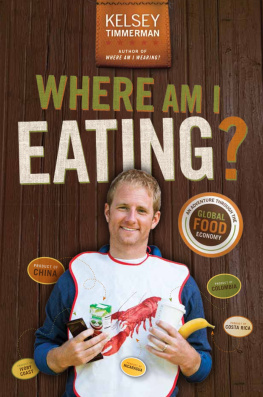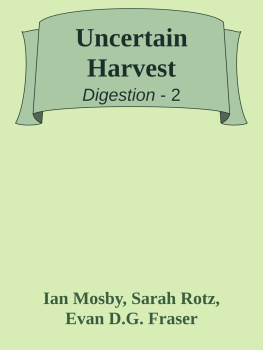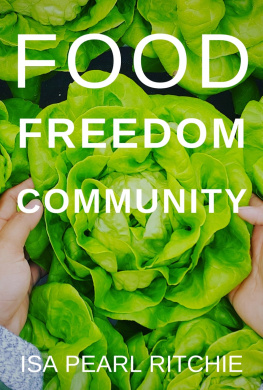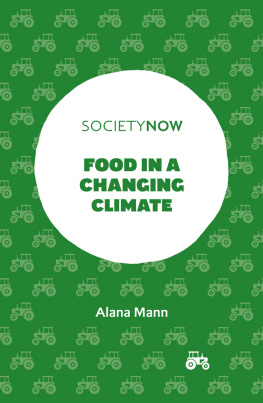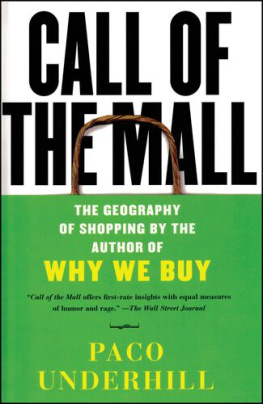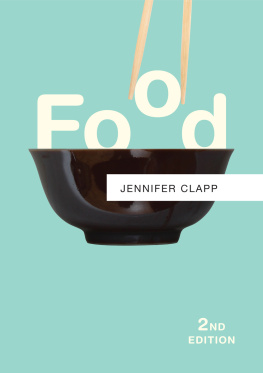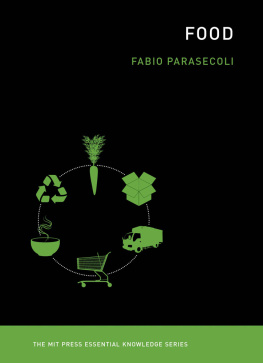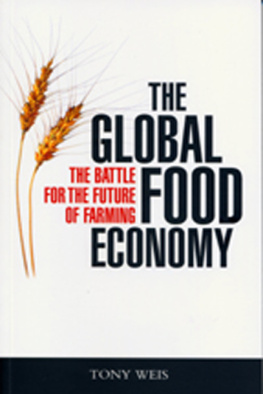
Cover image: Brian MacDonald www.WonderkindStudios.com
Cover design: Rule29 Creative www.Rule29.com
Copyright 2013 by Kelsey Timmerman. All rights reserved.
Published by John Wiley & Sons, Inc., Hoboken, New Jersey.
Published simultaneously in Canada
No part of this publication may be reproduced, stored in a retrieval system, or transmitted in any form or by any means, electronic, mechanical, photocopying, recording, scanning, or otherwise, except as permitted under Section 107 or 108 of the 1976 United States Copyright Act, without either the prior written permission of the Publisher, or authorization through payment of the appropriate per-copy fee to the Copyright Clearance Center, 222 Rosewood Drive, Danvers, MA 01923, (978) 750-8400, fax (978) 646-8600, or on the web at www.copyright.com. Requests to the Publisher for permission should be addressed to the Permissions Department, John Wiley & Sons, Inc., 111 River Street, Hoboken, NJ 07030, (201) 748-6011, fax (201) 748-6008, or online at www.wiley.com/go/permissions.
Limit of Liability/Disclaimer of Warranty: While the publisher and author have used their best efforts in preparing this book, they make no representations or warranties with the respect to the accuracy or completeness of the contents of this book and specifically disclaim any implied warranties of merchantability or fitness for a particular purpose. No warranty may be created or extended by sales representatives or written sales materials. The advice and strategies contained herein may not be suitable for your situation. You should consult with a professional where appropriate. Neither the publisher nor the author shall be liable for damages arising herefrom.
For general information about our other products and services, please contact our Customer Care Department within the United States at (800) 762-2974, outside the United States at (317) 572-3993 or fax (317) 572-4002.
Wiley publishes in a variety of print and electronic formats and by print-on-demand. Some material included with standard print versions of this book may not be included in e-books or in print-on-demand. If this book refers to media such as a CD or DVD that is not included in the version you purchased, you may download this material at http://booksupport.wiley.com. For more information about Wiley products, visit www.wiley.com.
Library of Congress Cataloging-in-Publication Data:
Timmerman, Kelsey, 1979
Where am I eating? an adventure through the global food economy / Kelsey Timmerman.
pages cm
Includes index.
ISBN 978-1-118-35115-4 (hardback); ISBN 978-1-118-63986-3 (ebk); ISBN 978-1-118-63982-5 (ebk); ISBN 978-1-118-63979-5 (ebk)
1.Food industry and tradeUnited States. 2.Food industry and trade
International cooperation. 3.Globalization. I.Title.
HD9005.T56 2013
338.19dc23
2012050969
To Harper and Griffin
Part I
Coffee: Product of Colombia
Chapter 1
The Starbucks Experience
On most mornings, I drink Starbucks Colombian roast. I grind the beans and brew them in the French press my wife Annie bought me for Christmas.
I'm easily distracted and dangerously curious. One minute I was working, sipping on a fresh cup of coffee, and the next I was trying to figure out where exactly in Colombia my coffee came from. I found my way over to the Starbucks website looking for answers. Here's how Starbucks markets its Colombian roast.
How far do we go for a better cup of Colombian coffee?
Six thousand feetstraight up. Sounds extreme, we know. But high atop the majestic Andes, in a rugged landscape of simmering volcanoes, is where the finest coffee beans in Colombia like to grow. And just as there are no shortcuts through the dirt paths that crisscross the sheer slopes, we take none when it comes to nurturing these treasured cherries to gourmet perfection.
This Colombian marvel erupts on the palate with a juicy feel and robust flavors, a testament to the hearty riches of volcanic soils. Its remarkable finish, dry with hints of walnut, lifts this superior coffee into a class of its own. One sip and you'll agree it's worth every step of the climb.
How could I not feel all worldly, hardy, and refined after drinking such a sophisticated cup of coffee provided to me by such a dedicated company?
Not only did I want to drink this coffee after reading that narrative, I wanted to visit this magnificent land of sheer slopes and treasured cherries myself. I wanted to meet the people who grow my coffee. So I called Starbucks' press contacts and customer service to see if they could point me in the right direction. I left multiple voice mails. I e-mailed them repeatedly. Finally a customer service agent e-mailed me a response:
Hello Kelsey,
Thank you for contacting Starbucks.
We appreciate your interest in Starbucks.
Unfortunately, the information you are requesting is proprietary information, which we are unable to divulge. We're unable [to] provide information about the company beyond what we make publicly available.
I apologize for any inconvenience this may cause.
Thanks again for writing us. If you ever have any questions or concerns in the future, please don't hesitate to get in touch.
Sincerely,
[A customer service agent who will remain unnamed.]
Proprietary information? Huh, that's funny. I thought farmers were people.
My Grandpa Timmerman farmed until he was 82. When he was a kid, my dad rose before the sun, milked cows, tended the gang of free-range turkeys, and then went off to school. Grandpa and Dad delivered, weaned, fed, and killed hogs, chickens, and cows. They grew corn and beans. They worked the land. Their lives revolved around food.
The author's grandfather, Lee Timmerman, on the farm.

Merely one generation later, there's mea grown man who can't make Kraft Macaroni & Cheese. I can never get it straight; do you add the noodles before or after the water boils? And when does the packet of whatever that stuff pretending to be cheese come into play?
When I attempt to make mac and cheese, my three-year-old daughter, Harper, stares as I fumble at the stove, squinting at the tiny directions on the side of the box. I can almost read her mind: We are totally screwed if something happens to Mom.
Food is so inconvenient. You look in the fridge and in the pantry to see what you need, you go to the store, you put the food in the cart, you get the food out of the cart to be scanned, you put the food back in the cart, then it's in the trunk, out of the trunk, in the house, in the pantry or fridge, back out of the pantry or fridge, time to cook (or, in my case, microwave), eat, wash dishes, rinse, and repeat. The eating part is okay, especially if someone else is doing the cooking, but other than that, what's fun about food?
If there were a pill to take instead of eating, I would wash it down with a chocolate milkshake.
Lately, however, I've become obsessed with food. Not so much with eating it, but with the labels that appear on it. I've always had a thing with labels, I guess. In 2007, I followed the labels of my favorite items of clothing to their country of origin and hung out with the workers who made them in Honduras, Bangladesh, Cambodia, and China. I wrote about the experience in my book, Where Am I Wearing?
Next page
